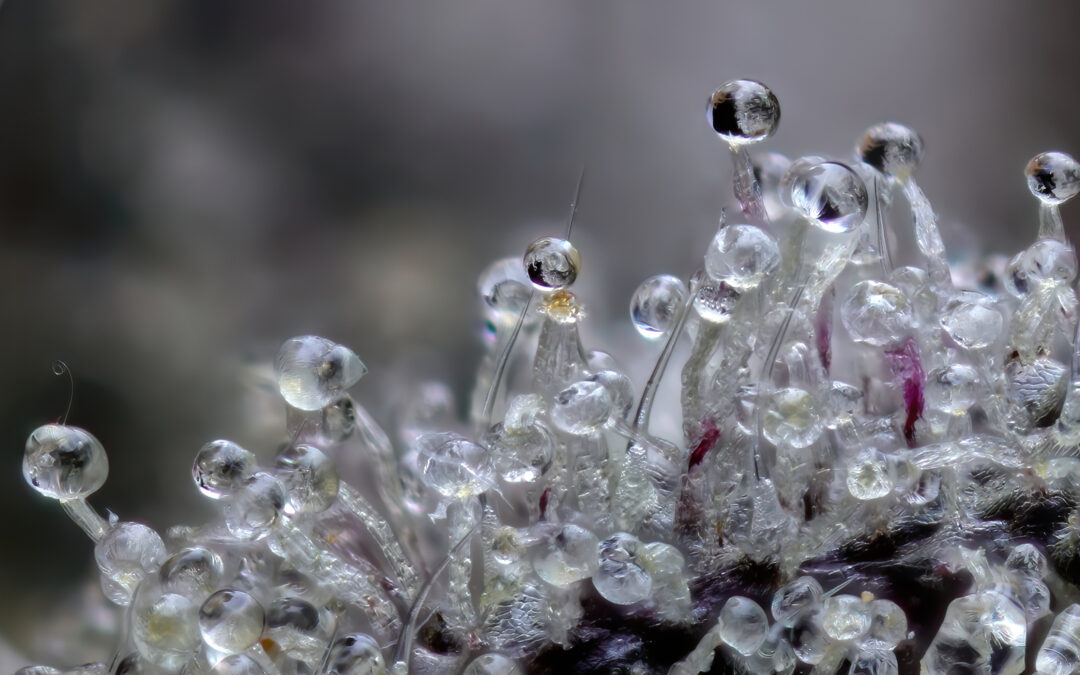Terpene extraction is becoming more mainstream in the cannabis world. If you aren’t sure what Terpene extraction consists of, let’s start with the basics.
What is a Terpene?
Terpenes are the aromatic oils that provide taste and smell in cannabis and a variety of other plants as well. Found in the same trichome glands as cannabinoids (THC and CBD). They can influence the effects of those strains by interacting with these cannabinoids. Distinctive terpene flavours in the cannabis community include pine, citrus, mint, lavender, and berry. Over 100 terpenes have been discovered in the cannabis plant. Many of those terpenes are being studied for potential mental health benefits and mood-enhancement. In order to fully enjoy the benefits of the cannabis strain, terpene extraction plays a key role.

What is a Plant Extract?
Plant extraction is the process that aims to remove certain compounds from the tissue of a plant, usually using a solvent such as CO2 or Ethanol. This process is simply to isolate desirable properties of the plant into oils for uses in cooking, baking, smoking, vaping, topicals, wellness products, cosmetics, and more.
Terpene extracts are gaining popularity in the cannabis community for their potential medicinal benefits and unique ability to alter the smell, taste, and effects of each specific cannabis strain.
For these reasons, it is becoming important for processors to know how to properly create terpene extracts and “terp” products. Retaining the complexity of the terpene compounds ensures that the natural aromatic flavors are preserved throughout the process. Resulting in a highly pure oil concentrate.
5 things you should know about quality terpene extractions:
-
- Terpene extractions are best achieved during a short, light run, preferably set at subcritical C02 parameters. This means using high pressure and low temperature in your extraction machine. Said by many processors to be the best method of terpene extraction, the low temperatures greatly reduce the risk of altering or destroying the terpenes. As well as protecting delicate plant compounds. This process pulls the higher-molecular weight materials from the plant such as the paraffins, resins, and lipids. Tunable CO2 Extraction is our craft at CannaPiece Corp.
- It doesn’t end there! Post-processing with specialized equipment is required to refine the oil using two processes. The first process, called Winterization, uses freezing temperatures to remove the leftover unwanted fats, waxes, lipids and chlorophyll from the cannabinoids and terpenes.
- The next process, called Distillation or Short-Path Distillation, uses high heat to further refine the oil and isolate the cannabinoids and any remaining solvents out of the extract. You will be left with an authentic fragrant and flavorful terpene extract.
- The terpene extract should appear as pure, and light with a golden hue. This is because the fatty substances and chlorophyll should be removed. Leaving just the pure aromatic oils as the extract. You know you have done a good run based on the color of your extract!
- The higher-end “Cannaisseur” Market is starting to look for a vast spectrum of products including terpene extractions, and terpene-based products such as “terp” sauce. Cannabis products including concentrates, edibles, and topicals are already increasing in demand across Canada, but it takes a properly trained technician and high-quality operating techniques to create the pure aromatic extract that these consumers desire, and only a few companies are starting to provide these services.
Terpene extracts can have a variety of aromas and tastes.
References
Booth, J. K., Page, J. E., & Bohlmann, J. (2017). Terpene Synthases from Cannabis sativa. PloS one, 12(3), e0173911.
Sexton, M., Shelton, K., Haley, P., & West, M. (2018). Evaluation of cannabinoid and terpenoid content: Cannabis flower compared to supercritical CO2 concentrate. Planta Medica, 84(04), 234-241
Until next time…



